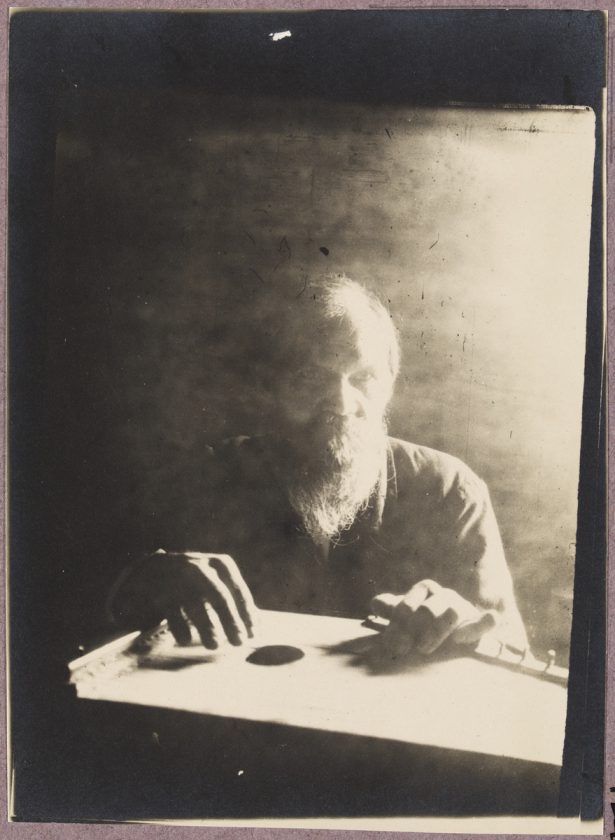“Iivana Mišukka” – The second archive album of Karelian kantele players is released
News
February 05, 2023
The second part of the kantele tune publications from the Finnish Literature Society archive from a hundred years ago has now been published on Etno.net. In the first release (2021) kantele player Teppana Jänis from Suistamo was presented, and now Iivana Mišukka (1861–1919) from the same parish can be heard.

Iivana Mišukka. Kuva: A. O. Väisänen 1916-1917. Kansatieteen kuvakokoelma. Antellin kokoelmat. Museovirasto. (finna.fi)
The publication includes both original copies of phonograph & parlograph recordings and edited versions to correct speed and pitch. The edited versions are also partially played and recorded again to strengthen the kantele sound.
The chosen release platform, Etno.net, makes it possible to add information about the historical musician, original recording sessions, how copies were made in the 1960s and 1980s, about new edits – and add musical notations. The additional information is only in Finnish. The recording can be found both on Etno.net’s audios and in educational materials.
In the early 20th century, the remote areas of Border Karelia were still living through the final phase of the transformation of musical culture, where the old runosong culture was giving way to a newer music culture. Thus, Mišukka’s repertoire, like that of other Border Karelian kantele players, consisted of music based on the runosong culture as well as more modern dances and songs.
The change in musical culture was also reflected in the design of musical instruments: the small kantele, hollowed out of a single piece of wood, was already rare at the turn of the century. The Mišukka’s kantele was a new type of instrument with 26 strings and constructed of several parts – in Väisänen’s words, a “good-sounding” instrument. However, Mishukka used only 14 of the 26 strings, playing the same tunes in the 1917 recordings, varying either from a higher or a lower hand position.
The publication includes the Maanitus dance recorded by Armas Launis in 1905 and dance tunes and songs recorded by Väisänen in 1916 and 1917.
